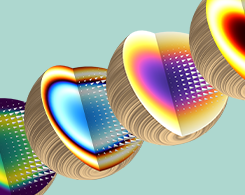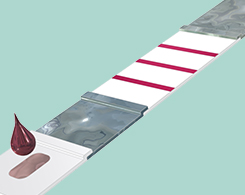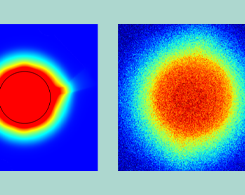Verfahrenstechnik Blog-Beiträge

Thermochemische Umwandlung von Biomasse durch Pyrolyse von Holz
Bei der Pyrolyse wird Biomasse in Produkte wie Holzkohle umgewandelt, die wiederum in Wasserstoff umgewandelt werden kann. Hier erfahren Sie mehr über die Modellierung der Pyrolyse mithilfe der Parameterschätzung.

Modellierung eines Schnelltests in COMSOL Multiphysics®
Möchten Sie wissen, wie genau die Schnelltests für COVID-19 funktionieren? Hier finden Sie eine umfassende Erklärung sowie drei Beispielmodelle in COMSOL Multiphysics®. (Teil 2 von 2)

Eine Einführung in die Physik von Schnelltests
Auf dem Lateral Flow Assay (LFA) beruhende Schnelltests, auch immunochromatographische Tests genannt, können als ziemlich fortschrittliche, aber sehr robuste Mikrolabore betrachtet werden. (Teil 1 von 2)

Entwicklung eines Silizium-MEMS-Chips für die bedarfsgesteuerte DNA-Synthese
The development of genome editing tools like CRISPR-Cas9 has increased the demand for DNA synthesis technology. Researchers are creating a DNA synthesis platform to broaden horizons in the field. Dank der Entwicklung von Genom-Editierungs-Tools wie CRISPR-Cas9 ist die Nachfrage nach DNA-Synthesetechnologien gestiegen. Forscher entwickeln eine DNA-Syntheseplattform, um den Horizont auf diesem Gebiet zu erweitern.
